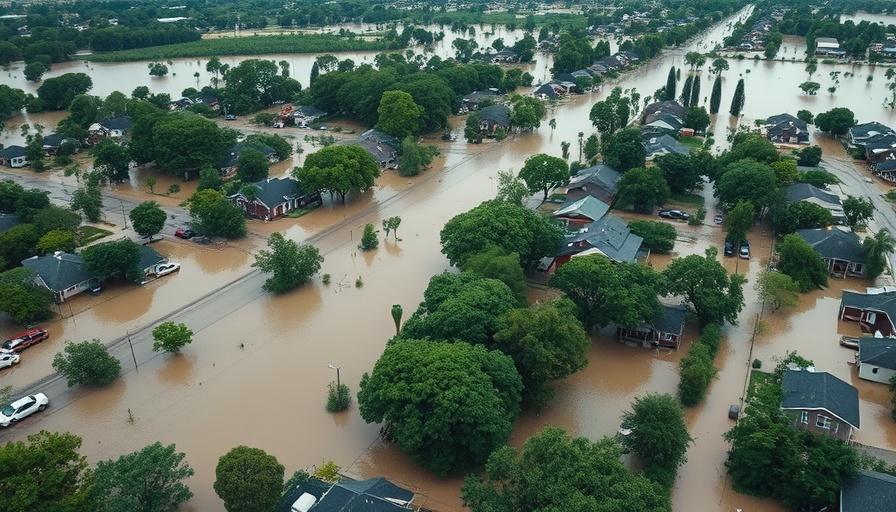
The Rising Toll of Texas Flooding: A Tough Lesson
Flash floods have devastated parts of central Texas, leading to the tragic loss of nearly 80 lives, with the death toll expected to increase. Most of these fatalities occurred in Kerr County, where a girls' camp was swept away in the unexpected floodwaters. The heartbreaking reality is that includes the lives of 28 children, prompting a wave of frustration and concern over emergency response and notification practices.
Understanding the Warnings Issued
The deluge began late Thursday night, with meteorological reports indicating that rainfall equivalent to several months fell within hours. The Guadalupe River rose dramatically, increasing by 26 feet within a mere 45 minutes, leading to a breach of its banks. As flooding progressed, the Texas Division of Emergency Management activated state emergency resources, highlighting the elevated risks across West and Central Texas.
On Thursday, the National Weather Service issued a flood watch for Kerr County, followed by specific flash flood warnings early Friday morning. Despite these warnings, there are serious questions surrounding their effectiveness and the public's awareness.
What Went Wrong? A Look at Communication Failures
Critics are wondering whether officials did enough to alert residents about the looming disaster. Governor Greg Abbott pointed out that many Texans are accustomed to flood warnings but emphasized that no one expected a wall of water nearly 30 feet high. Furthermore, the effectiveness of communication has raised eyebrows. Kerrville’s City Manager, Dalton Rice, noted that the light rain might have caused a false sense of security, as he himself jogged along the Guadalupe River shortly before the flooding began.
Factors Contributing to the Tragedy
The combination of rapid, extreme weather conditions and delayed evacuations has proven catastrophic. The absence of a county-administered warning system, primarily due to limited financial resources, exacerbated the situation. Judge Rob Kelly highlighted that such systems are costly and politically challenging to establish.
Moreover, the potential for widespread miscommunication plays a critical role. Some residents may become desensitized to frequent weather alerts, which can lead to complacency in the face of genuine danger. These factors together might have contributed to many individuals not evacuating in time.
Lessons for the Future: Better Response Protocols Needed
The horror of this situation has sparked discussions about how to improve flood preparedness and response protocols in Texas and across the nation. With climate change increasing the frequency and severity of such weather events, proactive measures are more crucial than ever. Local governments must consider investing in robust early warning systems to ensure that residents receive accurate and timely information.
Furthermore, community education about the real dangers of flash flooding is essential. Residents need to be regularly informed about what to expect when alerts are issued, which can potentially save lives in future emergencies.
Real-Time Data and Resources for Public Safety
As we process the aftermath of this disaster, resources such as real-time weather alerts and emergency response services must be evaluated and enhanced. Governments and agencies managing public safety should prioritize implementing technology that can provide local alerts appropriately and ensure all community members can access vital information, especially in vulnerable areas.
Moving Forward: Prioritizing Community Resilience
As we witness the aftermath of this tragedy, it is imperative for communities to rally together to discuss what went wrong and how to set better protocols in place for future emergencies. Collective actions, awareness, and local engagement must be pushed to the forefront to build resilience against the increasingly unpredictable nature of our climate.
This catastrophic event serves as a wake-up call, urging all emergency response teams and officials to adapt and prepare adequately for unpredictable weather phenomena. Without policy and procedural changes, we cannot hope to prevent future tragedies.
 Add Row
Add Row  Add
Add 




 Add Row
Add Row  Add
Add 

Write A Comment